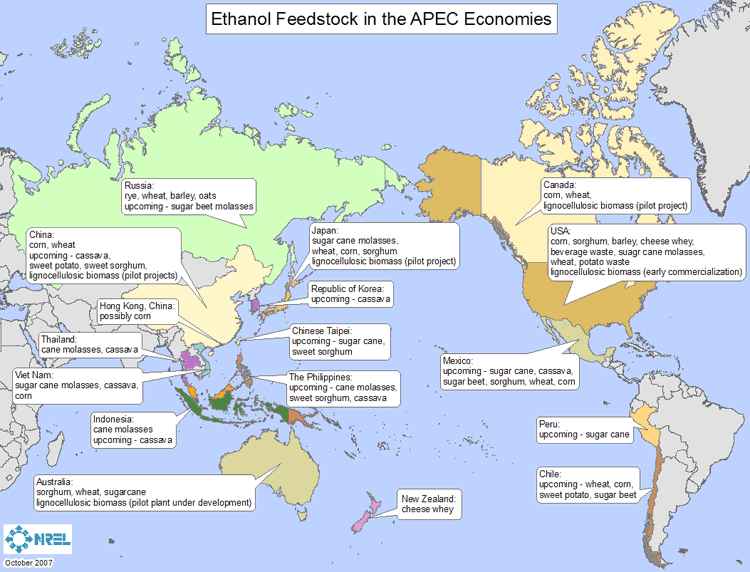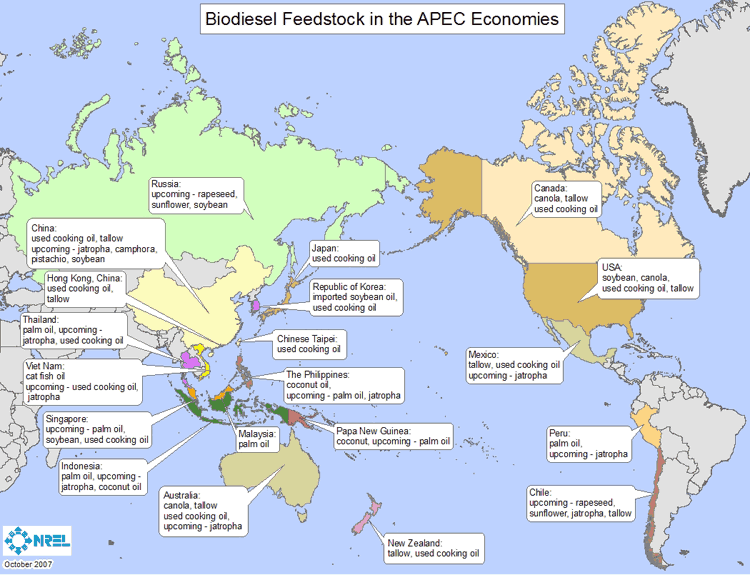Summary of APEC Biofuels Activities
The biofuels industry in the Asia-Pacific Economic Cooperation (APEC) region consists of two distinct sectors, ethanol and biodiesel. Fuel ethanol production within the region in 2007 was estimated at approximately 27,600 million liters, mainly produced in the United States; China; Canada; Australia; and Thailand. Biodiesel production in 2007 was approximately 4,400 million liters with the majority of the production coming from the United States; Indonesia; Malaysia; China; Australia; and Canada.
Biofuels in the APEC region are produced from a variety of first-generation feedstock using well-established conversion technologies. For ethanol production, these include: starches from grains (cereals, feed, and grains), tubers (cassava and sweet potatoes), sugars from crops (sugar beets, sugarcane, and sweet sorghum), and food-processing byproducts (molasses, cheese whey, and beverage waste). First-generation biodiesel feedstocks used in the APEC economies include vegetable oil (mainly soybean, rapeseed, and palm oil), used cooking oil, and animal fat (tallow and cat fish oil). Second-generation feedstocks for ethanol production include lignocellulosic material, such as crop and forest residues. Economies with large-scale agriculture and forestry operations such as Canada; the United States; and China have set up demonstration projects using lignocellulosic biomass for ethanol production. An advanced biodiesel feedstock includes microalgae, and few companies in the United States and New Zealand have started pilot projects to grow algae (Figures 1 and 2).
Figure 1. Ethanol Feedstock in APEC Economies

Figure 2. Biodiesel Feedstock in APEC Economies

